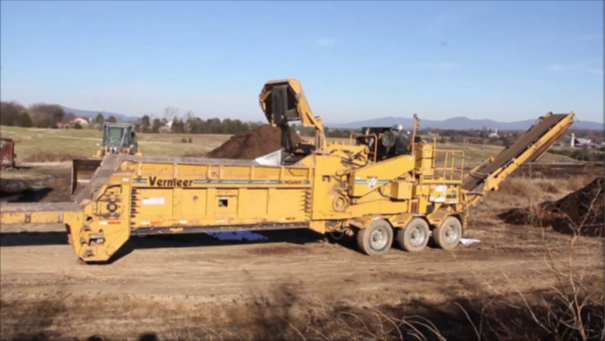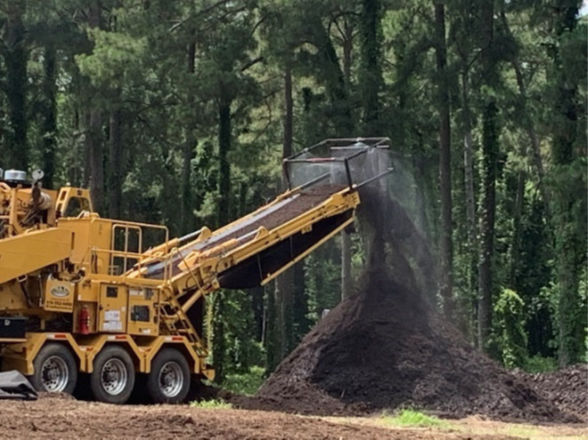EPA Researchers Test Mortality Management Approaches to Reduce Potential Spread of African Swine Fever Virus

Published September 27, 2022
African Swine Fever Virus (ASFv) is a deadly pig disease that spreads rapidly and can affect domestic and wild swine. While the virus has not been found in the United States, it is present in many countries around the world. The virus is not a direct threat to human health and cannot be transmitted from pigs to humans, but it has the potential to devastate America’s swine, pork industry, and food supply. Further, the management of the resulting animal carcasses, if not done properly, could result in adverse impacts to human health and the environment.
While ASFv has never been detected in the United States, it has been recently confirmed in the Dominican Republic and Haiti. EPA researchers and responders are working with USDA’s Animal Plant Health Inspection Service (APHIS) to develop disease control measures and test approaches to manage infected waste, including mortality management. Although people cannot get infected by AFSv, the virus can be carried on clothing, shoes, and equipment and APHIS is interested in finding approaches to reduce any potential impacts to our farms and our food supply.
EPA researchers and responders have worked with APHIS and the North Carolina Department of Agriculture and Consumer Services (NCDA&CS) to study approaches to clean and disinfect equipment and vehicles, as well as approaches to manage animal carcasses. Safe, on farm management is the most preferred way to approach mortality, with composting the most popular management technology in many states.
However, for a virus like ASFv, we may need carcass disposal or compost capacity of around 3 million pounds per day. Managing animal mortality on site is preferred because transporting infected waste and animal carcasses off site could increase the spread of the virus. On-farm composting has been successfully used in responding to the recent Highly Pathogenic Avian Influenza outbreak within the poultry industry. However, composting whole, large animals could take up to a year as opposed to the several weeks required to compost smaller animals like poultry.
The composting process requires a carbon source (e.g., wood chips, corn stover) to be combined with the animal carcasses on a bed of similar carbon material (to absorb leachate from the decomposing animals), then covered with additional carbon material in a “windrow” to encase the composting process to achieve required temperatures and to prevent access by vermin.
EPA and APHIS are studying grinding equipment, for example industrial scale horizontal grinders, or woodchippers, to see if they could help speed up the composting process. Using a grinder and combining carcasses with another carbon source, like vegetative debris, as materials are fed to the grinder prior to composting, was shown to reduce the composting time to a month or less.

EPA researchers are also assessing ways to reduce disease transmission focusing on potential air emissions of any viral particles. Misting or spraying water onto the ground materials and adding a deflector screen at the conveyor outlet is one of the approaches being tested to help reduce aerosol emissions. EPA made air measurements at the NC Horticultural Research Center in Clinton, NC, in the vicinity of grinder operations while processing carcasses routinely gathered at the many NC pig farms. The carcasses that were tested in the grinders (diverted from the normal dead stock gathering process that sends the routine animal mortalities that occur every day on the many pig farms in eastern NC to the local rendering plant) did not have any disease, so pig DNA is being used as a proxy for measurement of ASFv, which can’t be tested in the field in the United States. APHIS risk assessors will interpret the data collected and convert the estimates of pig DNA in the air and deposited on the ground into estimations of ASFv based on published veterinary studies on viral loading in infected animals.
More research is needed to determine whether additional aerosol mitigation might be necessary to reduce the risk of viral spread. The field testing to acquire the aerosol measurements from using horizontal grinders on mortalities has been completed and the results are being analyzed. EPA researchers are currently working with air quality modelers from OAQPS on modeling the results from the field tests to estimate downwind transport and ground deposition of potential viral particles. The results from the modeling, coupled with additional analysis by APHIS risk assessors, will enable “what if” scenarios, allowing decision makers to assess safety of proposed grinder locations and impact of different meteorological conditions.
This research is important to find ways to protect our food supplies, the pork industry, and swine around the country in the event of an ASFv outbreak. ASFv spreads rapidly and it is very important to reduce the risk of its spread by following appropriate disease control measures.
